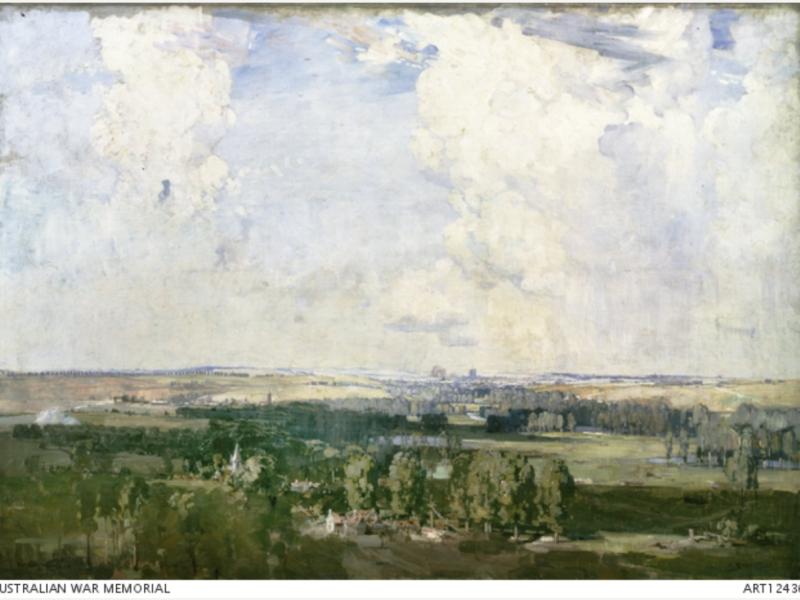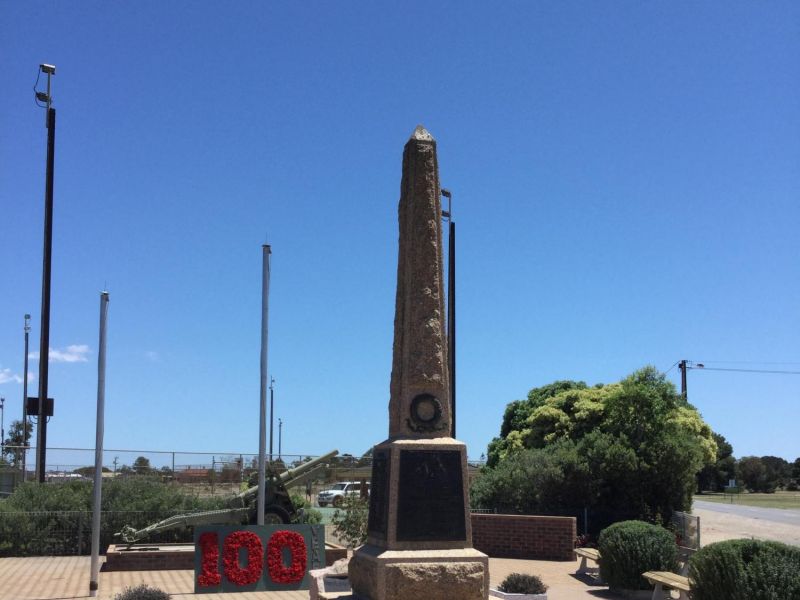Private Reginald Reseigh Gluyas, 50th Battalion, AIF
Reginald Reseigh Gluyas was born on 24 October 1898 in Edithburgh, a small town on the south-east corner of Yorke Peninsula in South Australia. The son of shopkeepers, Frank and Louisa Gluyas, he and his two younger sisters grew up locally. He attended Edithburgh Public School and later at Stott and Hoare’s Business College in Adelaide. Gluyas worked for the South Australian Farmers Union, and was a clerk in his father’s shop when war broke out in 1914.
Reginald Gluyas enlisted in the Australian Imperial Force on 23 July 1917, at the age of 18. Assigned to the 32nd Battalion, he embarked from Melbourne aboard the troopship Ulysses in December. Gluyas reached Egypt in January 1918 and spent time in training camps before joining his unit in France in April.
The following month, Gluyas was transferred to the 50th Battalion and was sent to the front lines around the River Ancre in France.
On 5 April, Gluyas’ battalion was part of the defence at Dernancourt, the largest German attack mounted against Australian troops during the war. Days later, on 25 April 1918, Gluyas and his comrades took part in the legendary battle at Villers-Bretonneux, forcing the German army back to their lines and recapturing the town.
As the end of the war drew closer, Gluyas and the 50th Battalion took part in the decisive battle of Amiens on 8 August. The allied offensive aimed to push through German lines in a multifaceted attack using artillery, infantry, aeroplanes and tanks.
The attack commenced in the early hours of the morning, allowing troops to reach the enemy’s front lines under artillery cover. The combination of man- and machine-power was so effective that in just three hours the enemy’s front line had been overrun.
By the end of the day, allied forces had liberated 116 towns and captured more than 29,000 prisoners. The offensive at Amiens was so successful that it was later labelled as “The black day of the German army”.
Efforts to consolidate allied successes around Amiens continued throughout August as troops attempted to gain more ground.
On 17 August, Gluyas’s battalion was serving in the lines near the French village of Chipilly. Gluyas was resting in a dugout when he was hit by an enemy shell. His comrades carried him to an ambulance which took him to a casualty clearing station at Daours.
With severe shrapnel wounds to his abdomen, there was little that medical staff could do for him. He died of his wounds later that day, aged 19.
In Australia, the Daily Herald wrote of Gluyas’s passing, noting, “He had many friends to whom he had endeared himself by his bright and cheerful disposition and many good qualities.”
Reginald Gluyas was buried at the Daours Communal Cemetery in France, beneath the words of his grieving parents: “Greater love hath no man than this. His duty nobly done.”
Meghan Adams, Researcher
Image: Oil painting "Amiens, the key of the west", by artist Arthur Streeton, 1918
- Australian War Memorial https://www.awm.gov.au/collection/C173844

 Australian War Memorial
Australian War Memorial